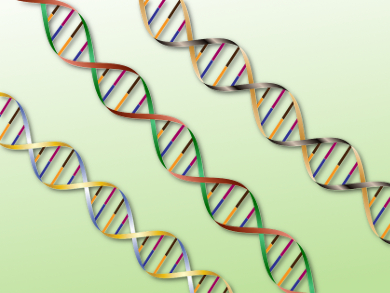DNA origami, the science of folding DNA molecules into specific shapes, has opened up an almost limitless number of possible nanostructures. However, stiffness is usually achieved by packing multiple helices into densely packed lattices, which is an inefficient use of material.
Thorsten Schmidt and colleagues, Technical University Dresden, Germany, folded DNA molecules into strong, lightweight triangular lattices using low-salt buffers that are compatible with cell culture environments. The cavities in the open frameworks are large enough to contain metallic nanoparticles and enzymes.
The researchers developed design software that finds the most efficient sequence for joining and folding DNA helices to produce the desired structure. This software uses a triangular grid template that is well suited to designing lightweight trusses made from networks of joined triangles. This is in contrast to existing programs with design structures based on dense bundles of helices grouped into patterns with hexagonal or square cross-sections. They then synthesized the most promising structures in the laboratory.
Future efforts will focus on controlling chirality, making ordered arrays of gold nanoparticles by wrapping flat DNA trusses around them, and folding single-stranded DNA to create periodic structures with minimal tile sets.
- Design and Synthesis of Triangulated DNA Origami Trusses,
Michael Matthies, Nayan P. Agarwal, Thorsten L. Schmidt,
Nano Letters 2016.
DOI: 10.1021/acs.nanolett.6b00381




